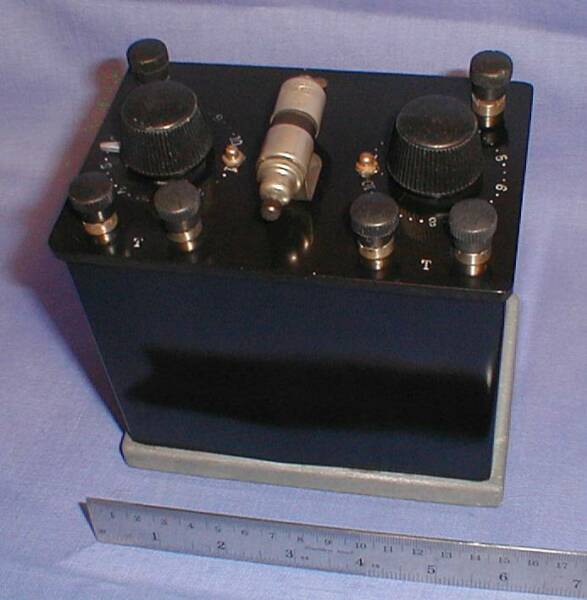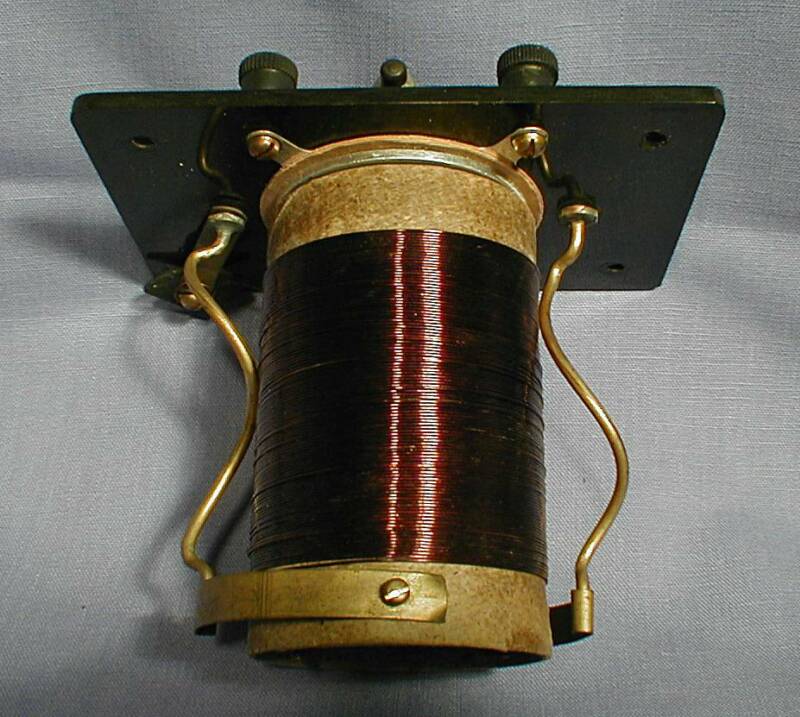Ugly but also Elegant
-
The Penberthy Injector Co.
Detroit, Michigan
Model 4R - 1925
In early October of 1996, Brad Jones and others organized a one day informal fleamarket for us in Greensboro, NC. After the trading had just about “wound down”, the little crystal set pictured here was still sitting in the back of Ed Bell’s van, dirty, rusty and neglected by just about everyone.... I had found a few small items at the market and was happy I had made the trip with Ron Lawrence and Ted Miller up from the Charlotte area. But !!! I still had way too much money in my pocket and I felt I just had to buy somethin’ more. When Ed told me this dirty, ugly little guy was available for only $20.00, I just could not pass up such a deal !
I did not think much more of my purchase until a day or so later when I decided to see if this set was pictured in Maury Sievers’ two volumes of “Crystal Clear”. Yep, there was a photo ( minus the base my set has ) but not any more of a description than you see in the title of this article. And that’s all I’ve been able to find out about this set to date.
It was so dirty and rusty I just could not leave it in the shop without giving it a quick clean-up. As I removed the case and inspected the construction, I was imediately taken by the near perfect symetry of the design and amazed by how so many parts were engineered to provide double duty. Here are some of the things I found to be really elegant....
1. I don’t recall ever seeing moving contacts made by brass rods formed into one-turn spirals as on this set. ( I do have a WW-I vintage rheostat that uses this same idea for a moving contact but the one-turn spiral is inlaid into a suporting fiber rod shaft. ) The leaf springs at the end of the spiral maintain contact pressure and connect the moving contacts to the circuit.
2. The “phone condenser” not only performs the electrical function but also, by making one plate of thick aluminum provides a support hub for the top of the tuning coil. The other plate of the PC is a die stamped part that provides tabs for two of the dual headphone connections. ( eliminates wires )
3. The nuts used on the top of the panel each have two V notches cut into them so that phone tips will stay securely attached as well as ordinary stripped wires.
4. The top flange of the tin case provides three of the circuit connections. And the threaded rods that hold the base, which is a cast aluminum part that supports the bottom end of the tuning coil, also mount the PC and are positioned so that the acorn nuts for these rods provide rotational stops for the tuning knobs!
5. There is only one wire in the set necessary to connect to one side of the crystal detector which is mounted in the cartridge on the top of the set. The other crystal connection is made back thru the mounting bracket and thru screws that just happen to connect to the center of the thin plate of the phone condenser..
So, while this little set is still ugly even when its cleaned up, and probably this design is more lossy from a radio frequency energy standpoint than other designs; I am still very much impressed by the absolute elegance of the mechanical design. It just goes to prove that the guts of some of these old sets are just as interesting as the outsides of the cabinets. Think about it the next time you are cleaning up an old set.
Note: At a 1997 meet, Craig Smith pointed out a set of Penberthy headphones he was trying to sell.... He had an instant sale! These phones must have been offered at the same time as the crystal set and show unusual features of their own.

